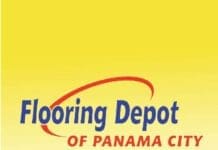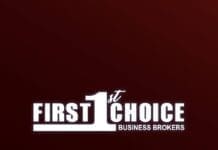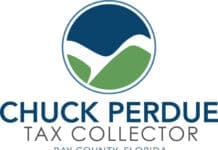 By Maurice Stouse, Financial Advisor and Branch Manager
By Maurice Stouse, Financial Advisor and Branch Manager
Happy New Year to our readers! We hope that you can move closer to attaining your goals and realizing your dreams.
The new year brings resolutions, a new administration, a new congress and a lot of potential things that can impact investors in 2025. We thought it would be an innovative idea to get our readers thinking of some strategies that might help them become more tax efficient, work toward their objectives and help maximize the return on their savings and investments.
Let us start with tax advantaged type plans. First there is an IRA of course (it may or may not be tax deductible and it grows tax deferred). Next, do you have a workplace retirement savings plan? If you do, are you maximizing the amount you can have deducted (thus reducing your taxable income) from your paycheck? There are so many updates and potential for investors that we cannot cover them all here. Check out the IRS.gov website and look at IRS notice 2024-80. In summary, contribution limits are higher and there is even a provision where those 60-63 years old can do an $11,250 additional catch-up contribution vs. the $7500 catchup available to those over 50. The IRS max is $23,500 and if over age 50, it could be $31,000 in total. If age 60-63, that could be $34,750. That could lower taxes in the current year and help build your retirement. Add to that that employers can make contributions to your 401k as well and the grand total for your and your employer for 2025 has moved up to $70,000.
Then there is the Roth IRA. To qualify single tax filers would need make less than $146,000 and joint filers less than $230,000. That is because the ability to put in $7,000 to $8,000 to a Roth starts phasing out at those levels. The most important thing about a Roth? It grows tax free. So, while you may not get a tax deduction for the contribution think about never having to pay taxes on withdrawals. Retirement savers with Traditional IRAs from years ago are now taking distributions and of course those are taxable income. Note, they have an option to start converting a part of their traditional IRA to a Roth each year, pay the tax now and let it grow tax free. Unlike a traditional IRA there is no required minimum distribution when you reach that point for traditional IRAs. For these reasons and others, we believe Roth IRAs (and now Roth 401ks) have grown increasingly popular for those who can save and invest for their retirement. There are other things that investors should explore about Roths: The Kiddie Roth which allows the starting of this tax-free vehicle for those under age 18. We have learned that time in the market has meant more than timing the market and the longer the time money has to grow, the greater the potential. Lastly, for those that might have 529 funds remaining, some portion might be able to direct to a Roth.
Note that this information is for education and thought and cannot be a substitute for tax advice. Please utilize professionals on tax advice when wanting to potentially act on any of this. Also, working in conjunction with a financial or tax advisor might help you decide if one of these would be beneficial for you to consider.
What about HSAs (health savings accounts)? Another vehicle to lower taxable income and have a benefit grow tax free (if used for medical expenses). First you need to be enrolled in a high deductible health insurance plan to qualify. If you do, individuals can contribute $4,300 (add $1,000 if over age 55) and a family can contribute $8,550 ($9,550 if over age 55). These contributions lower your taxable income as well. Many providers also offer investment options for your contributions giving those the opportunity for growth. In sum, HSAs offer tax deductible contributions, tax free growth and tax-free withdrawals for qualified medical expense. Any funds not used by age 65 can be withdrawn without penalty, but it does count as taxable income. You could also pay some Medicare premiums and Medicare advantage plans from the HSA.
There is much more for savers and investors to consider when it comes to investing and saving in a most tax efficient was as possible. Once again, consult a tax advisor in collaboration with your financial advisor.
Maurice Stouse is a Financial Advisor and the branch manager of The First Wealth Management/ Raymond James in the main office located at The First Bank, 2000 98 Palms Blvd., Destin, 850.654.8124. Raymond James advisors do not offer tax advice. Please see your tax professionals. Email: Maurice.stouse@raymondjames.com.
Securities offered through Raymond James Financial Services, Inc. Member FINRA/SIPC, and are not insured by bank insurance, the FDIC, or any other government agency, are not deposits or obligations of the bank, are not guaranteed by the bank, and are subject to risks, including the possible loss of principal. Investment Advisory Services are offered through Raymond James Financial Services Advisors, Inc. The First Wealth Management and The First Bank are not registered broker/dealers and are independent of Raymond James Financial Services.
Views expressed are the current opinion of the author and are subject to change without notice. The information provided is general in nature and is not a complete statement of all information necessary for making an investment decision and is not a recommendation or a solicitation to buy or sell any security. Past performance is not indicative of future results. Raymond James advisors do not provide tax or legal advice. Please see a tax professional for advice specific to your own situation.
There is no guarantee that these statements, opinions, or forecasts provided herein will prove to be correct. The information has been obtained from sources considered to be reliable, but we do not guarantee that the foregoing material is accurate or complete. Future investment performance cannot be guaranteed, invest yields will fluctuate with market conditions. Investing involves risk and you may incur a profit or a loss regardless of strategy selected, including diversification and asset allocation. The S&P 500 is an unmanaged index of 500 widely held stocks that is generally considered to be representative of the U.S. stock market. Indices are not available for direct investment. Any investor who attempts to mimic the performance of an index would incur fees and expenses which would reduce returns.





















































